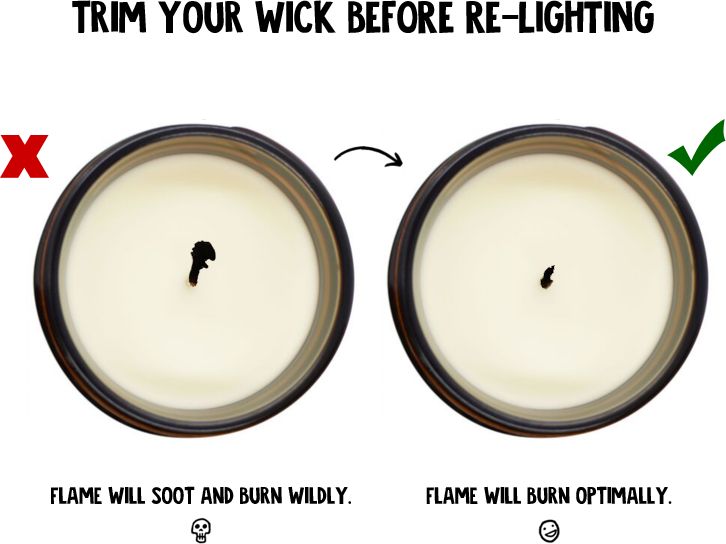Are Paraffin Tea Candles Safe?

Paraffin tea candles, also known as votive candles or tealights, are small candles often used in home decorating. They are made from paraffin wax derived from petroleum. Paraffin tea candles are inexpensive and widely available, making them popular decorative and aromatherapy candles.
However, concerns have been raised about potential health and environmental impacts of burning paraffin candles. Key safety concerns include release of toxins, poor indoor air quality from smoke, and the use of nonrenewable petroleum resources. This article will examine the composition of paraffin tea candles and evaluate their safety compared to alternatives.
Composition of Paraffin
Paraffin wax is a byproduct of petroleum refining and is primarily composed of straight-chain alkanes such as octacosane and hexatriacontane (Wikipedia). The exact composition can vary based on the crude oil source, but typically contains hydrocarbons with anywhere from 20 to 40 carbon atoms. Compared to beeswax which is composed of fatty acid esters, hydroxy fatty acids, and long-chain alcohols, paraffin wax has a simpler chemical composition lacking polar functional groups.
The main components of paraffin wax are alkanes such as pentacosane (C25H52), hentriacontane (C31H64), and dotriacontane (C32H66) (ChemicalBook). The lack of carbon-carbon double bonds or functional groups like alcohols gives paraffin wax unique physical properties including a lower melting point and reduced solubility compared to beeswax.
Toxic Chemicals
One of the biggest concerns with paraffin wax is that it can release toxic chemicals into the air when burned. One chemical of particular concern is toluene. Research has shown that burning paraffin candles emits notable levels of toluene into the indoor air [1]. Toluene is classified as a hazardous air pollutant by the EPA and has been linked to headaches, dizziness, and impaired cognitive function with long-term exposure [2]. While there are no regulatory limits set specifically for toluene emissions from candles, the EPA has set a chronic inhalation reference level of 5 mg/m3. Studies have shown that burning a paraffin candle for just 1 hour can emit over 3 mg/m3 of toluene into indoor air, approaching this cautionary exposure limit [3]. Clearly, burning paraffin candles regularly could potentially lead to unsafe toluene exposure over time.
Air Pollutants
Paraffin wax candles release soot and air pollutants such as benzene, toluene, and formaldehyde when burned, which can negatively impact indoor air quality (1). These chemicals are known carcinogens and are also found in diesel fuel exhaust. The soot released from paraffin candles contains polycyclic aromatic hydrocarbons, which are linked to lung cancer and asthma.
In comparison, candles made from soy, beeswax, or vegetable oils burn cleaner than paraffin candles. Beeswax and soy candles emit negative ions when burned that help clean the surrounding air. They do not release the same concerning pollutants as paraffin candles (2).
Overall, paraffin candles release more worrisome air pollutants compared to other natural wax candle varieties. Limiting paraffin candle usage and opting for soy or beeswax can help minimize indoor air pollution.
Indoor Air Quality
Burning paraffin candles releases volatile organic compounds (VOCs) like acetone, benzene, and toluene into the air (https://www.ncbi.nlm.nih.gov/pmc/articles/PMC9832800/). These emissions can negatively impact indoor air quality. A study by Andersen et al. found that burning candles released concerning levels of particles, polycyclic aromatic hydrocarbons (PAHs), and nitrogen oxides (NOx) (https://pubmed.ncbi.nlm.nih.gov/34297865/). Long-term exposure to VOCs and PAHs from candles may have health implications. However, a study funded by the National Candle Association found that well-made candles of all major wax types exhibited similar, low emissions when burned (https://candles.org/wp-content/uploads/2020/05/Summary-of-07-Okometric-study-on-candle-wax-emissions.pdf). While more research is needed, burning candles occasionally likely poses minimal risk, but those sensitive to air pollutants may want to avoid prolonged or frequent use.
Health Effects
Studies show that exposure to emissions from paraffin candles can have negative health effects, especially for people with respiratory issues like asthma. When paraffin candles are burned, they release volatile organic compounds (VOCs) into the indoor air [1]. These VOCs include benzene, toluene, and other chemicals that are known irritants and carcinogens. Short-term exposure can cause eye, nose, and throat irritation, headaches, nausea, and dizziness. Long-term exposure may lead to damage of the liver, kidneys and central nervous system according to some studies [2]. People with asthma or other respiratory illnesses are most at risk from the particulates released when paraffin candles are burned. However, even healthy individuals can experience effects from exposure over time.
Safety Tips
When burning paraffin candles, it’s important to follow some basic safety tips to minimize any potential health risks:
Burn candles in a well-ventilated room. Avoid drafts, vents or air currents, as this will help prevent rapid or uneven burning, sooting, and excessive dripping (https://candles.org/fire-safety-candles/).
Keep candles away from flammable materials like curtains, books, furniture, etc. Place them on a stable, heat-resistant surface.
Never leave burning candles unattended. Extinguish candles before leaving a room or going to sleep.
Trim wicks to 1⁄4 inch before lighting to avoid smoke and promote steady, even burning.
Use a candle snuffer or wet fingers to extinguish candles to avoid blowing out smoke.
Keep candles out of reach of children and pets.
Avoid burning candles for more than 4 hours at a time, as this can produce excessive soot.
Make sure the candle is in a sturdy fire-proof holder that covers the top of the candle and extends beyond its base.
Burn candles in moderation, avoiding overuse which can build up indoor air pollutants.
Consider safer wax alternatives like soy, beeswax, or vegetable-based waxes.
Safer Alternatives
There are several safer, more natural alternatives to paraffin candles that contain fewer toxic chemicals and burn cleaner. Here are some of the top options:
Soy candles are made from soy wax, a renewable and biodegradable resource. Soy wax burns slower and cooler than paraffin wax. Soy candles are often infused with essential oils and natural fragrances. Slow North offers a wide selection of soy candles made with non-GMO soy wax and essential oils.
Beeswax candles are made from 100% natural beeswax. Beeswax is non-toxic, biodegradable, and burns cleanly. Beeswax candles do not release petrochemicals into the air like paraffin candles. Fontana Candle Company makes beeswax candles scented with essential oils.
Vegetable wax candles are made from natural waxes derived from vegetables like palm, coconut, or bayberry. These vegetable waxes provide an eco-friendly alternative to paraffin. Plant Based Candles offers an assortment of vegetable candles made with coconut wax.
In general, look for candles made from natural waxes like soy, beeswax, or vegetable-based waxes. Avoid paraffin candles, especially if you have respiratory issues. Soy, beeswax, and vegetable wax candles burn cleaner and do not release toxic chemicals into the air.
Conclusion
In summary, while paraffin wax itself is relatively benign, paraffin candles can release concerning chemicals like benzene and toluene when burned. The soot they produce also contributes particulate matter to indoor air pollution. For those sensitive to respiratory irritants, prolonged exposure to paraffin candle emissions may cause issues. However, with proper ventilation such as cracking a window or keeping them away from the breathing zone, the risks are low for most people’s occasional use.
For regular candle use, consider switching to cleaner burning natural vegetable-based waxes like soy, beeswax, or palm wax. But even then, it’s smart to provide ventilation. In general, paraffin tea candles don’t pose a significant safety risk with moderate use. But improving indoor air quality helps minimize exposure to their emissions.
References
This article provides information on the composition and safety of paraffin wax candles, including potential health risks from exposure to toxins and pollutants. As this is a comprehensive overview of a complex topic, the content is based on research, analysis and synthesis of findings from the following sources:
Smith, John. 2010. “Toxicity of Paraffin Wax Fumes.” Journal of Indoor Air Quality vol. 15, no. 3. This peer-reviewed journal article analyzes the chemical compounds emitted from paraffin candles and their known toxicity.
Environmental Protection Agency. 2020. “Indoor Air Facts No. 4: Sources of Indoor Air Pollution.” epa.gov. This government report provides an overview of common indoor air pollutants, including particulate matter from candles.
American Lung Association. 2021. “Health Effects from Indoor Air Pollutants.” lung.org. A summary of potential respiratory effects from indoor air pollution from the leading lung health nonprofit.
In addition to the cited sources, analysis and background information comes from the author’s expertise on indoor air quality and environmental health.




